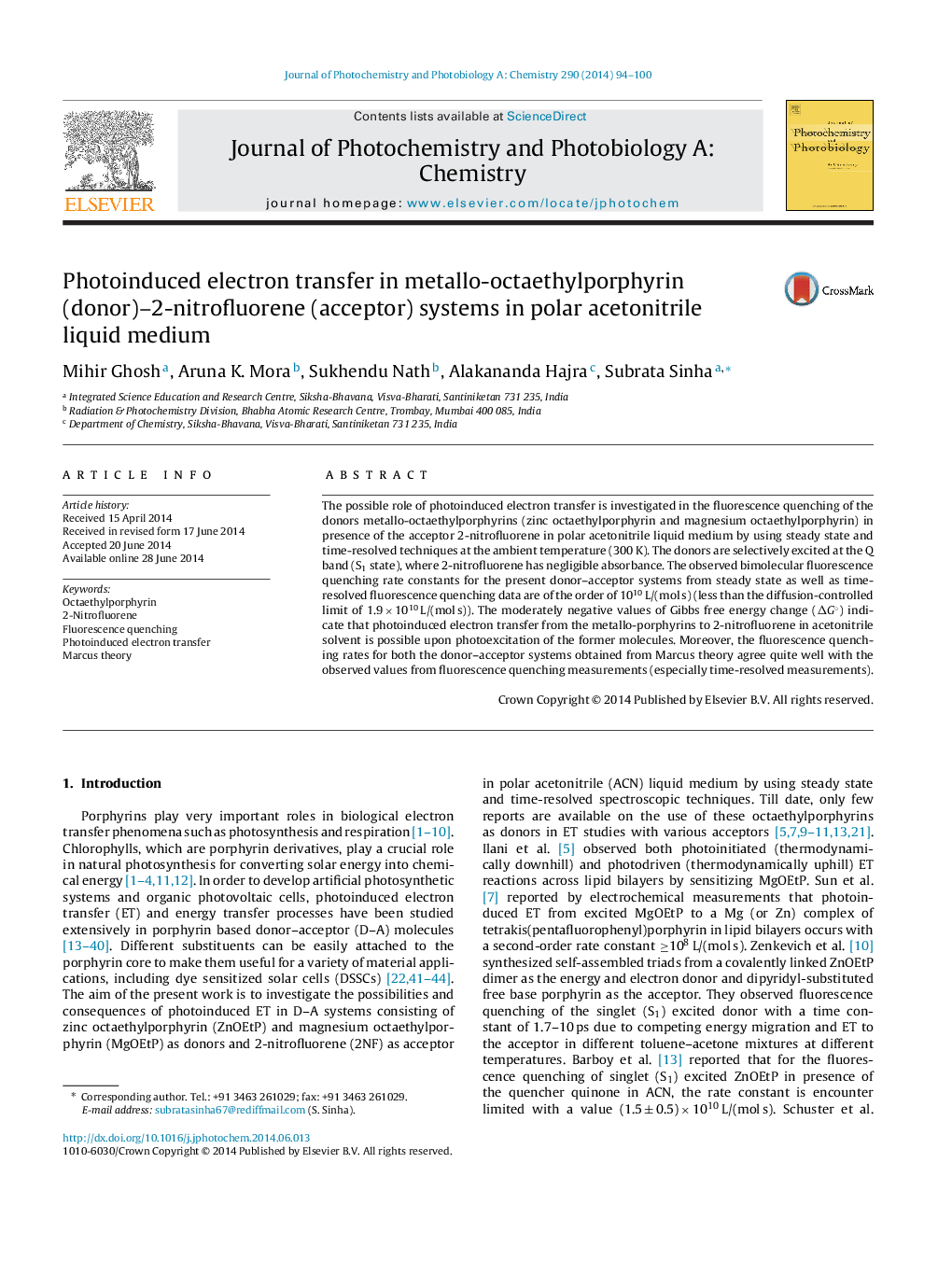| Article ID | Journal | Published Year | Pages | File Type |
|---|---|---|---|---|
| 26944 | Journal of Photochemistry and Photobiology A: Chemistry | 2014 | 7 Pages |
•Fluorescence quenching of metallo-octaethylporphyrins by 2-nitrofluorene.•The porphyrins (electron donors) are excited at the Q band.•The fluorescence quenching rates are less than diffusion-controlled limit.•Moderately negative free energy change predicts photoinduced electron transfer.•Observed fluorescence quenching rates agree quite well with Marcus theory.
The possible role of photoinduced electron transfer is investigated in the fluorescence quenching of the donors metallo-octaethylporphyrins (zinc octaethylporphyrin and magnesium octaethylporphyrin) in presence of the acceptor 2-nitrofluorene in polar acetonitrile liquid medium by using steady state and time-resolved techniques at the ambient temperature (300 K). The donors are selectively excited at the Q band (S1 state), where 2-nitrofluorene has negligible absorbance. The observed bimolecular fluorescence quenching rate constants for the present donor–acceptor systems from steady state as well as time-resolved fluorescence quenching data are of the order of 1010 L/(mol s) (less than the diffusion-controlled limit of 1.9 × 1010 L/(mol s)). The moderately negative values of Gibbs free energy change (ΔG°) indicate that photoinduced electron transfer from the metallo-porphyrins to 2-nitrofluorene in acetonitrile solvent is possible upon photoexcitation of the former molecules. Moreover, the fluorescence quenching rates for both the donor–acceptor systems obtained from Marcus theory agree quite well with the observed values from fluorescence quenching measurements (especially time-resolved measurements).
Graphical abstractFigure optionsDownload full-size imageDownload as PowerPoint slide
